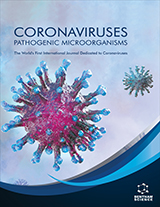Abstract
Brain’s limbic system is the target site of action of cocaine. This area of the
brain is involved in pleasure and motivation. Cocaine causes the dopamine build-up in
the synapses by creating a feeling of being “high”. Cocaine induces action by binding
to the dopamine transporter, which transports excess dopamine back to the presynaptic
neuron. The nucleus accumbens (NAc) of the limbic system is the primary target of
cocaine action. Cocaine also alters gene expression in the limbic system by altering
dopamine transporters or dopamine receptors. Cocaine causes auditory hallucinations,
restlessness, paranoia, and psychosis. This chapter reviews the impact of cocaine on the
brain.
About this chapter
Cite this chapter as:
Jayalakshmi Krishnan ;Cocaine and its Effects on the Brain, Drug Addiction Mechanisms in the Brain (2024) 1: 1. https://doi.org/10.2174/9789815223828124010002
| DOI https://doi.org/10.2174/9789815223828124010002 |
| Publisher Name Bentham Science Publisher |






















